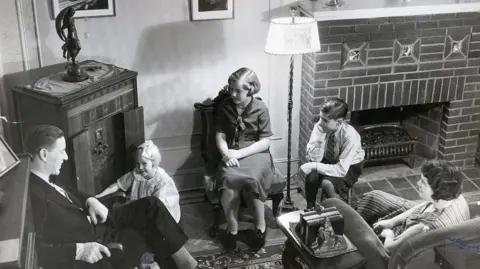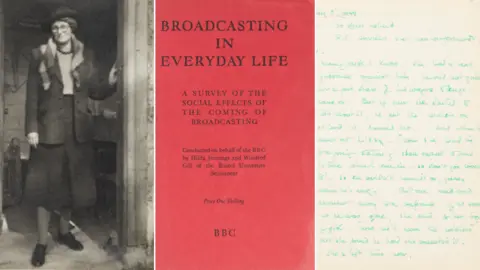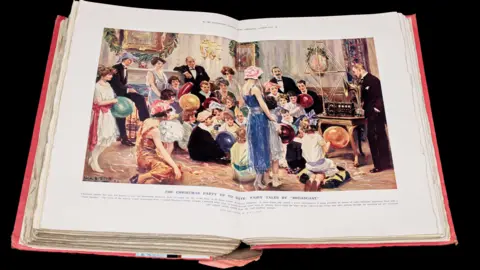Unearthed notepads reveal 1930s attitudes to radio
 Getty Images
Getty ImagesPioneering audience research on the effect of radio in homes across the country has been revealed for the first time.
In 1938, the BBC commissioned Winifred Gill and Hilda Jennings to conduct interviews in Barton Hill, a working class area of Bristol.
Their interviews were published in a pamphlet called Broadcasting In Everyday Life, A Survey of the Social Effects of the Coming of Broadcasting, but details hinting at how the radio affected family dynamics were omitted at the time.
"Some of it wasn't on message, and in a few cases it was slightly ugly material," said researcher Beaty Reubens.
Winifred Gill's original notepads were discovered by Ms Reubens at the Bodleian Library in Oxford.
They form the basis of a new exhibition at the library, Listen In: How Radio Changed the Home, exploring how radio changed families.
"Women at home loved hearing about travel and things that enlarged their horizon, but they also felt quite patronised by what the BBC was broadcasting," said Ms Reubens.
"They complained endlessly about the cookery programmes, that the cooks in the programmes had servants and a large kitchen whereas they had to cook and clean every day.
"There was a feeling of resentment towards middle class women which is really interesting," she added.
 Bodleian Library
Bodleian LibraryWinifred Gill and Hilda Jennings worked for the University of Bristol settlement, an early form of social work to improve the lives of families, interviewing 800 households in Barton Hill for the pamphlet.
Church, boxing and bacon - quotes from the notebooks:
- "I can't listen to the boxing. Makes my heart beat. I can't understand how they keep saying it's beautiful – it's all black eyes and cut faces and they say it's lovely and beautiful."
- "The news is for me the very special feature of all. It is unbiased, unprejudiced, and for the individual gives some insight into the possible warping of the newspapers. My wife releases me from the shop counter for the 6 o'clock news...I've even neglected the bacon machine for the news." - Mr James, a grocer.
- "Wireless services aren't the same as church. You don't join in the same. Besides, you answer back sometimes, when you don't agree, well you wouldn't do that in church, you'd have your neighbour nudging you!"
 Illustrated London News; Bodleian Libary
Illustrated London News; Bodleian LibarySome of the interviews which were not published in the 1930s detail domestic tensions, Ms Reubens said.
"In one case there's an extensive story of a man who uses radio as a form of coercive control.
"Whenever his wife spoke to her husband saying she didn't get enough weekly income to keep the family going, he would turn up the volume of the radio to drown her out, and wouldn't let her use it.
"One weekend the man went away, and when the woman saw her chance to use it, he disconnected it to stop her."
"The exercise books give a full and colourful picture of what it was like for radio to arrive in the home," she added.
Listen In: How Radio Changed the Home runs at the Bodleian Library until 31 August.
Follow BBC Bristol on Facebook, X and Instagram. Send your story ideas to us on email or via WhatsApp on 0800 313 4630.
